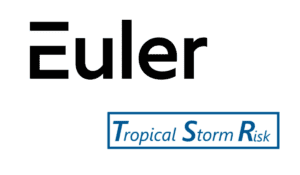How much does the John Hancock building weigh?
How much does the John Hancock building weigh?
46,000 tons DESIGN & CONSTRUCTION HIGHLIGHTS At the peak of construction, more than 2,000 people worked on the project; some five million man-hours were required to complete the development. Enough steel to make 33,000 cars was used to make the frame, which took three years to complete and weighs 46,000 tons.
Why did the John Hancock Tower fail?
The opening of building was delayed from 1971 to 1976, and the cost went from $75 million to $175 million, according to The Globe. The window issue persisted for four years, according to The Globe. It was discovered that the cause was in the design of the window, so all 10,334 panes of glass had to be replaced. Jul 15, 2015
What was John Hancock’s family like?
John Hancock was born in Braintree, Massachusetts, on January 23, 1737. His parents were John Hancock, a Harvard graduate and minister, and Mary Hawke. After the death of his father when Hancock was seven, he was adopted by his uncle, a wealthy Boston merchant.
What did John Hancock go to college for?
John Hancock went to Boston Latin School and after his graduation in 1750 he was accepted in Harvard College where he graduated in 1754. He worked for his uncle right after graduation being groomed to take over the family business. Later he spent four years in England furthering his studies in commerce. Dec 1, 2012
Was John Hancock a president of the United States?
Hancock was a member of the Continental Congress from 1775 to 1780; he served as its president from May 1775 to October 1777.
What does Manulife stand for?
The Manufacturers Life Insurance Company The Manufacturers Life Insurance Company.
How old is Marianne Harrison John Hancock?
How old is Marianne Harrison? Marianne Harrison is 57, she’s been the President and Chief Executive Officer and John Hancock of Manulife since 2017. Mar 1, 2022
How much does Roy Gori make?
What is the salary of Roy Gori? As the President, Chief Executive Officer, and Director of Manulife, the total compensation of Roy Gori at Manulife is CAD$14,695,500. Mar 1, 2022
Do travel insurance policies cover pandemics?
Even though travel insurance companies may offer COVID-19 sickness coverage, they typically don’t offer benefits for every circumstance. “Every policy is different, so you’ll want to get a good grasp of a plan’s coverage before you purchase it,” Tunnah explained. Mar 29, 2021
Does insurance cover Covid?
Death Benefit: Term insurance with COVID-19 financial protection also covers untimely death caused due to COVID-19. The nominees will get the sum assured in case of an untimely death due to COVID-19.
Can you get travel insurance during Covid?
Multitrip.com travel insurance policies provide cover for emergency medical and other expenses incurred abroad if you catch Covid-19 subject to the policy terms, limits, conditions and exclusions.
What is not covered under term life insurance?
Term insurance plans do not cover death due to self-inflicted wounds. Death due to any critical illness is covered under Term plans. It also includes sexually transmitted disease like HIV/AIDS. If you have an existing illness when purchasing a Term insurance plan, then it is mandatory to disclose it.
Does term insurance cover pandemic deaths?
Yes, if an individual has an existing term insurance plan, it will cover death from the deadly coronavirus. The coronavirus pandemic has caused many deaths and poor health all over the world. As a result, insurance companies have included death by the virus in their list of policy inclusions. Feb 9, 2021
Does Pru Life cover Covid?
Leading life insurer Pru Life UK continues to provide its customers protection from COVID-19, with the latest offering of its free PRUPersonal Accident insurance with COVID-19 and vaccine cover valid for one year through Pulse, the company’s all-in-one health and wealth app. Apr 13, 2021
Does Canada Life cover ambulance?
Workplace benefits are provided by many employers or associations to help their employees cover the cost of things provincial health care plans may not pay for, including certain prescription drugs, dental, hospital, vision, paramedical and ambulance services.



